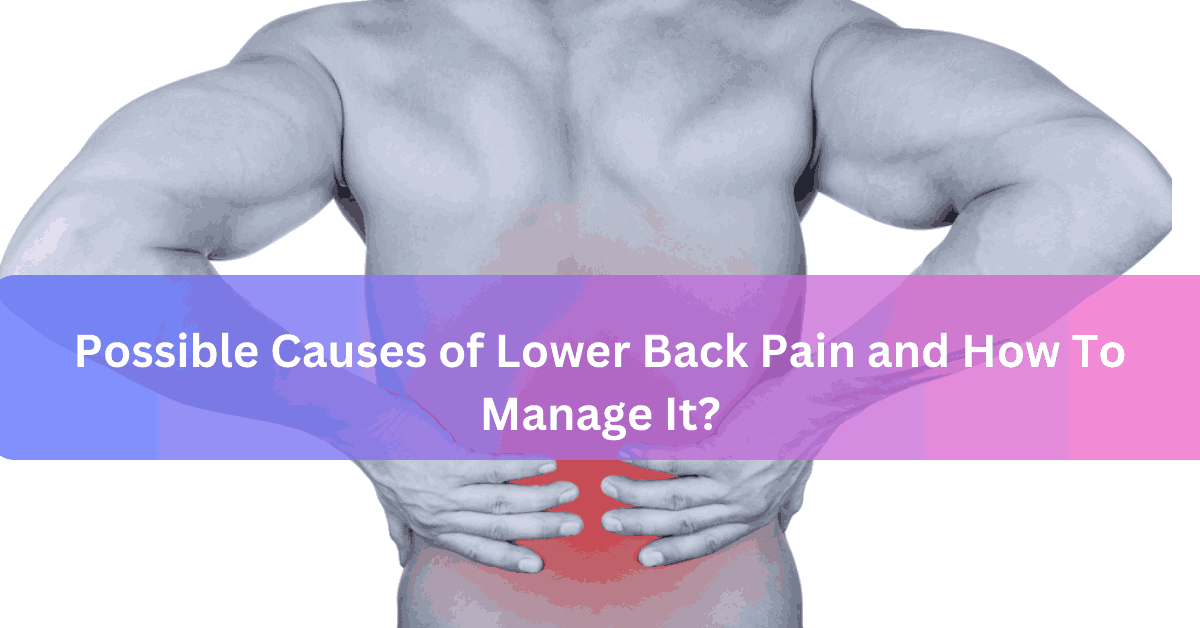Possible Causes of Lower Back Pain and How To Manage It
Lower back pain can be a common issue due to many variables. It can range from a mild, dull ache to a severe, debilitating condition. Understanding the potential causes can help you manage it effectively. Here are different causes of lower back pain and various back pain management techniques:
Muscle or Ligament Strain
When muscles are abnormally stretched or torn, it can lead to aches or pain. This may be due to heavy lifting, sudden movements, or an awkward fall. Some damage to the tendons and muscles in the lower back can result in longer treatments.
Non-surgical methods, including rest, physical therapy, and pain management, can typically alleviate this back pain. Rest can allow the strained tissues to heal, while physical therapy can help strengthen the muscles and improve flexibility to prevent future strains.
Bulging or Ruptured Discs
Episodes of low back pain or a long intermittent history may often precede this condition. When a disc herniates, it can place pressure on nearby nerves or the spinal cord, causing pain and potentially leading to more severe complications.
One such complication may occur when a large fragment of disc material is pushed into the spinal canal. This can compress the bundle of nerve roots, causing severe pain, numbness, or weakness in one or both legs.
You can manage bulging or ruptured discs with a combination of physical therapy, medication, and, in some cases, surgery. Physical therapy focuses on exercises that improve posture, flexibility, strength, and core stability to relieve pressure on the spine.
Medications like over-the-counter pain relievers, nerve pain medications, muscle relaxants, and cortisone injections can help manage the pain. Surgery may be recommended if conservative treatments don’t provide relief.
Arthritis
This can cause lower back pain, impacting the spine’s mobility and overall function. Many forms of arthritis, such as osteoarthritis and rheumatoid arthritis, can affect the back, causing pain, stiffness, and swelling.
Spinal arthritis symptoms may include pain and reduced mobility in the back and neck, potentially leading to nerve compression. Treatment for this form of back pain often involves physical therapy, medication to control pain and inflammation, and, in some cases, surgery.
Osteoporosis
Bones can become porous and brittle due to osteoporosis, which may lead to compression fractures. This can significantly contribute to lower back pain when it affects the vertebrae in the spine. The condition is characterized by decreased bone density, making them more prone to fractures.
When these fractures occur in the spine, it can result in considerable back pain. Managing osteoporosis can involve medication, dietary changes, and exercise. Medications such as bisphosphonates, hormone-related therapy, and bone-building medications can help slow and rebuild bone loss.
Work With a Pain Management Professional
Consult a healthcare provider if your lower back pain is severe or doesn’t improve with self-care. They can provide a comprehensive treatment plan tailored to your specific needs.
These professionals have specialized training in diagnosing and treating various types of pain, including chronic back pain. They can tailor a comprehensive treatment plan that addresses your needs and goals.


